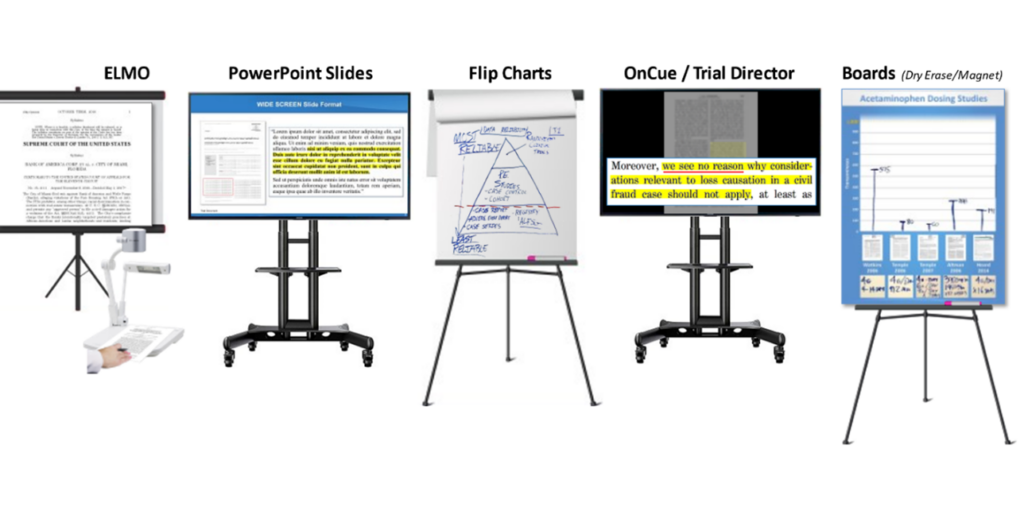Effective trial presentations can make a difference in legal proceedings.
Effective trial presentations can make a difference in legal proceedings.
Blog Article
Just How Trial Presentations Enhance Your Argument and Convince Jurors
Trial discussions offer as a crucial system for enhancing legal disagreements and convincing jurors. The critical use of visuals not only makes clear intricate details yet additionally records jurors' attention more efficiently than words alone.

Significance of Visual Help
Aesthetic aids play a vital duty in enhancing the efficiency of trial presentations, as they can substantially enhance target market involvement and retention of info. In the context of a trial, where jurors are charged with handling complicated info, aesthetic aids offer to simplify and clarify key points. Graphes, graphs, and pictures can communicate data and principles that may or else bewilder or puzzle jurors, permitting a more uncomplicated understanding of the evidence offered.
Moreover, aesthetic aids assist in preserving juror interest throughout the procedures. By damaging the dullness of verbal testament, these tools can stress essential disagreements, making them much more unforgettable. Effective aesthetic help can also stimulate emotional actions, which can be pivotal in persuading jurors to line up with the speaker's story.

Crafting Compelling Stories
An engaging narrative is essential in test discussions, as it works as the backbone of effective persuasion. It enables lawyers to weave with each other truths, proof, and emotional elements right into a systematic tale that resonates with jurors. This narrative framework makes it possible for jurors to comprehend the intricacies of the situation while leading them through the lawyer's argument.
To craft an engaging story, attorneys ought to concentrate on clearness and coherence. Additionally, the use of dazzling summaries can develop psychological pictures that assist jurors imagine the events, making the story extra memorable.
Furthermore, integrating vital motifs throughout the discussion reinforces the core message and aids in retention - trial presentations. The narrative must not only communicate details but likewise stimulate a sense of justice, highlighting the risks entailed. Eventually, a well-constructed story fosters a link between the jurors and the instance, placing the attorney's argument as both reliable and engaging, thus enhancing the possibility of a desirable judgment

Involving the Court Psychologically
Effective jury engagement pivots on the lawyer's ability to link with jurors on an emotional level. This link Discover More can considerably impact jurors' understandings and their best decision-making.
Visual help, such as pictures or video clips, can further enhance emotional engagement, offering jurors with brilliant representations of the situation's human aspects. Crafting a story that highlights the battles and accomplishments of the individuals included ensures that jurors see beyond the legal disagreements address and acknowledge the human repercussions of their choices.
Additionally, tone and body movement play a vital role in communicating feeling. An attorney's passionate shipment can reverberate with jurors, enhancing their emotional investment in case. It's vital to stabilize sob stories with valid proof, guaranteeing that jurors feel urged to act while remaining grounded in the reality. Eventually, a mentally engaged jury is most likely to be persuaded, making psychological link an essential part of efficient trial discussions.
Structuring Your Presentation

The body of the discussion ought to be logically fractional into bottom lines, each supported by engaging evidence. It is valuable to Get More Info utilize narration methods to weave facts right into a narrative that jurors can quickly follow. Aesthetic help, such as charts and video clips, can improve comprehension and involvement, helping to highlight critical pieces of proof.
Real-World Study
Taking a look at real-world case research studies provides vital insights into the art of trial discussions and persuasion. The site instance of "O.J. Simpson v. Individuals of The golden state" illustrates exactly how aesthetic aids and compelling stories can guide jury understandings. The defense group effectively utilized an approach that combined prominent specialist testimonies with multimedia presentations, which mesmerized jurors and inevitably influenced their decision.
Another significant example is the "McDonald's Coffee Case," where the complainant's lawyers made use of visuals images of the injuries suffered by Stella Liebeck. trial presentations. This plain aesthetic proof played a crucial role in communicating the severity of her burns, leading to a considerable jury honor. Such instances show that impactful trial presentations frequently hinge on the efficient combination of visuals and storytelling to evoke psychological feedbacks from jurors
In addition, the "Casey Anthony Test" highlighted the value of narrative coherence and integrity. The prosecution's failure to establish a compelling timeline lessened their influential power, highlighting the need of a well-structured discussion. Examining these situations reveals that effective test presentations require critical planning, emotional involvement, and the capability to resonate with jurors' worths and ideas.
Conclusion
Test presentations dramatically boost disagreements and persuade jurors via the tactical use of aesthetic aids, engaging narratives, and psychological interaction. By streamlining complicated information and cultivating connections with the target market, these elements create a remarkable and impactful experience. A well-structured presentation equilibriums sob stories with accurate evidence, eventually reverberating with jurors' values. The assimilation of these methods not just influences decision-making yet likewise underscores the relevance of effective interaction in the courtroom.
Report this page